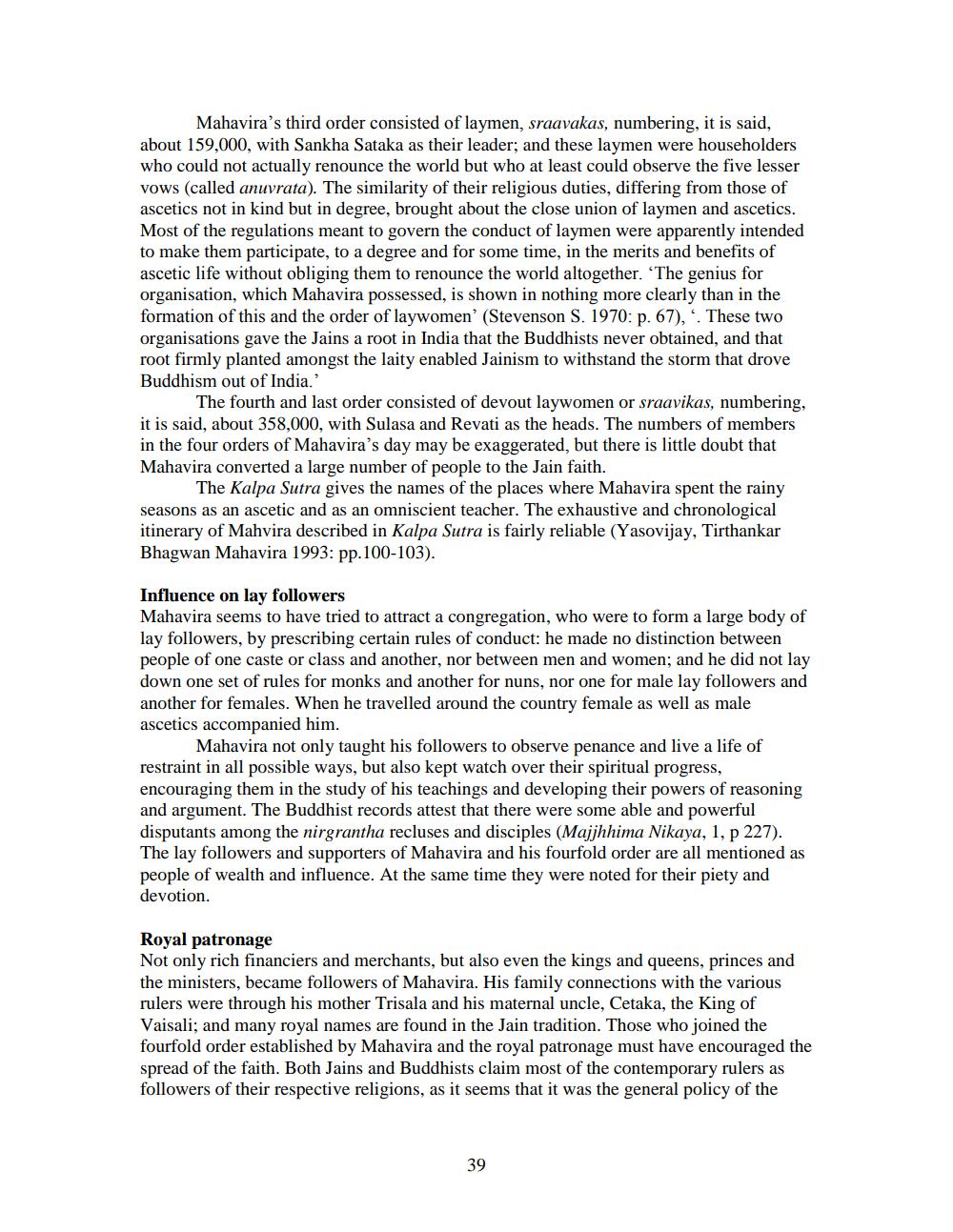________________
Mahavira's third order consisted of laymen, sraavakas, numbering, it is said,
about 159,000, with Sankha Sataka as their leader; and these laymen were householders who could not actually renounce the world but who at least could observe the five lesser vows (called anuvrata). The similarity of their religious duties, differing from those of ascetics not in kind but in degree, brought about the close union of laymen and ascetics. Most of the regulations meant to govern the conduct of laymen were apparently intended to make them participate, to a degree and for some time, in the merits and benefits of ascetic life without obliging them to renounce the world altogether. "The genius for organisation, which Mahavira possessed, is shown in nothing more clearly than in the formation of this and the order of laywomen' (Stevenson S. 1970: p. 67), . These two organisations gave the Jains a root in India that the Buddhists never obtained, and that root firmly planted amongst the laity enabled Jainism to withstand the storm that drove Buddhism out of India.'
The fourth and last order consisted of devout laywomen or sraavikas, numbering, it is said, about 358,000, with Sulasa and Revati as the heads. The numbers of members in the four orders of Mahavira's day may be exaggerated, but there is little doubt that Mahavira converted a large number of people to the Jain faith.
The Kalpa Sutra gives the names of the places where Mahavira spent the rainy seasons as an ascetic and as an omniscient teacher. The exhaustive and chronological itinerary of Mahvira described in Kalpa Sutra is fairly reliable (Yasovijay, Tirthankar Bhagwan Mahavira 1993: pp.100-103).
Influence on lay followers
Mahavira seems to have tried to attract a congregation, who were to form a large body of lay followers, by prescribing certain rules of conduct: he made no distinction between people of one caste or class and another, nor between men and women; and he did not lay down one set of rules for monks and another for nuns, nor one for male lay followers and another for females. When he travelled around the country female as well as male ascetics accompanied him.
Mahavira not only taught his followers to observe penance and live a life of restraint in all possible ways, but also kept watch over their spiritual progress, encouraging them in the study of his teachings and developing their powers of reasoning and argument. The Buddhist records attest that there were some able and powerful disputants among the nirgrantha recluses and disciples (Majjhhima Nikaya, 1, p 227). The lay followers and supporters of Mahavira and his fourfold order are all mentioned as people of wealth and influence. At the same time they were noted for their piety and devotion.
Royal patronage
Not only rich financiers and merchants, but also even the kings and queens, princes and the ministers, became followers of Mahavira. His family connections with the various rulers were through his mother Trisala and his maternal uncle, Cetaka, the King of Vaisali; and many royal names are found in the Jain tradition. Those who joined the fourfold order established by Mahavira and the royal patronage must have encouraged the spread of the faith. Both Jains and Buddhists claim most of the contemporary rulers as followers of their respective religions, as it seems that it was the general policy of the
39




